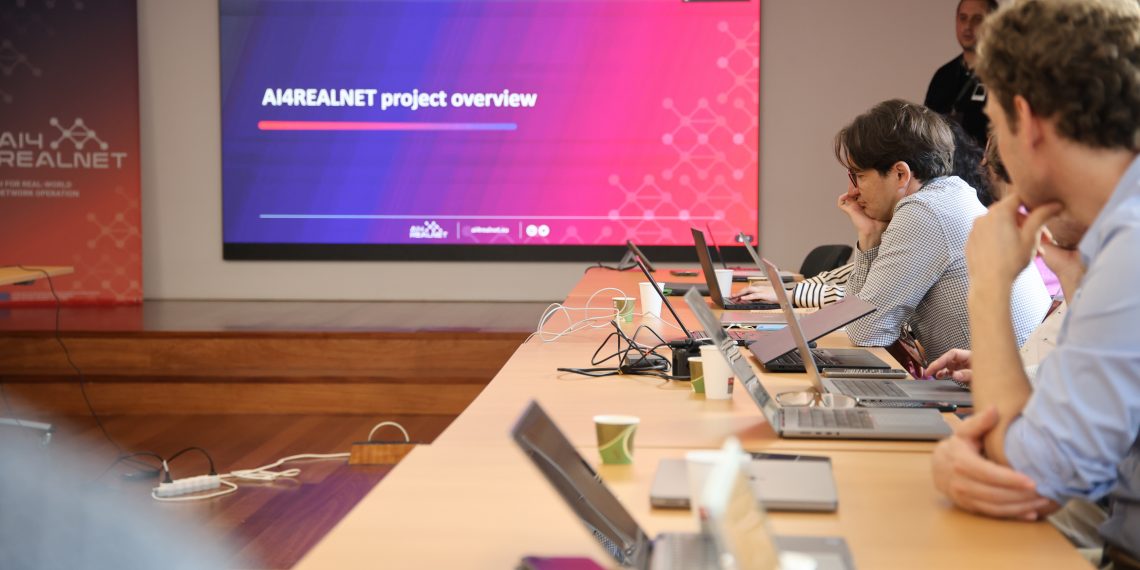What if Artificial Intelligence (AI) were to be used to support decision-making, increase efficiency and safety in the operation of critical infrastructures (typically run by humans) in the energy (power grid) and transport (railway and air traffic management) sectors? This is the goal of the Horizon Europe European project AI4REALNET – AI for REAL-World network operation – led by the Institute for Systems and Computer Engineering, Technology and Science (INESC TEC).
It presents itself as a challenging and ambitious project that relies on a collaboration between humans and AI to support decisions made by human operators, creating conditions for the decarbonisation of these sectors, improving the quality of service and efficiency, while solving potential congestion issues in these infrastructures and contributing to increase the efficiency of investments in sectors critical to society. Focusing on the areas of electricity, railway, and air traffic management, AI4REALNET will ”help operators of critical infrastructures to implement human-IA interactions, promote organisational changes in the context of integrating AI into business processes, and improve operational and planning intelligence”, explained Ricardo Bessa, INESC TEC senior researcher responsible for the project and coordinator of the Centre for Power and Energy Systems (CPES).
The project also favours joint learning, investing in different ways of human-AI interaction. ” Our goal is not to replace one with the other, but to ensure that AI emerges as a way to support faster decision-making, and even operationalising certain tasks autonomously“, he stated.
In sectors where human intervention is still predominant, the integration of new AI-centric technologies is an opportunity to reduce the workload of operators, addressing the challenges and needs of the sectors and designing solutions with adequate responses, in order to support people.
To apply and demonstrate AI-based decision systems in industry use cases, revealing tangible additional value, AI4REALNET developments will be validated in six use cases led by industry partners from the three domains.
“We want to improve the safety and resilience of critical infrastructures, which are becoming more challenging, not only due to the increase in the volume of information, but also due to the changes imposed by decarbonisation; we hope that AI can increase the capacity to operate more effectively and with less margin of error”, said Ricardo Bessa.
With the involvement of the sectors, the project will also promote awareness of the benefits of reinforcement learning and explainable machine learning. “It’s important for managers to be aware of what to expect from an AI system, and for workers to realise that under certain conditions, a system can fail, be biased, and make wrong decisions or suggestions. This will represent a cultural change in the way humans perceive and interact with digital systems”, mentioned the researcher.
The project will also resort to current open-source AI-friendly digital environments e.g., Grid2Op, Flatland, and BlueSky to foster and advance a global AI community.
“We seek to develop new algorithms and approaches, so that we can inspire other research groups and operators of critical infrastructures (e.g., water distribution, telecommunications), and contribute to putting Europe at the forefront of AI”; he concluded. All results will become available as open-source assets.
The project is led by INESC TEC and, in addition to Portugal, it brings together organisations from France, Germany, Italy, the Netherlands, Switzerland, Sweden and Austria. The consortium is composed of 17 partners.
The project received close to €4M by the European Union, through the Horizon Europe programme, and €2M by the government of Switzerland.




 News, current topics, curiosities and so much more about INESC TEC and its community!
News, current topics, curiosities and so much more about INESC TEC and its community!